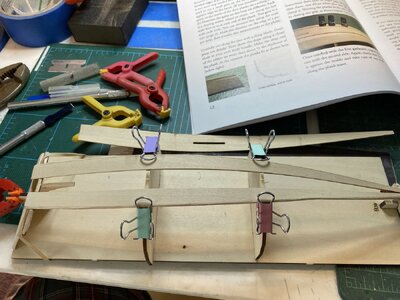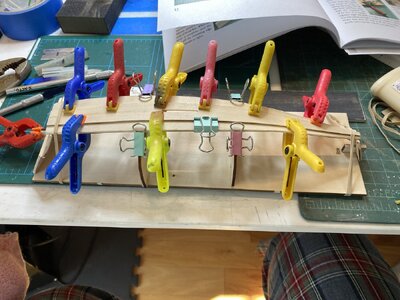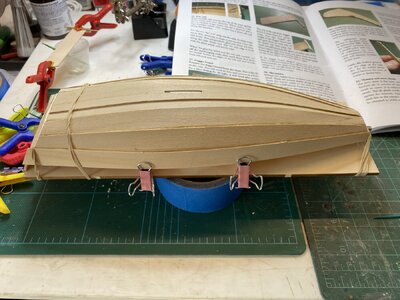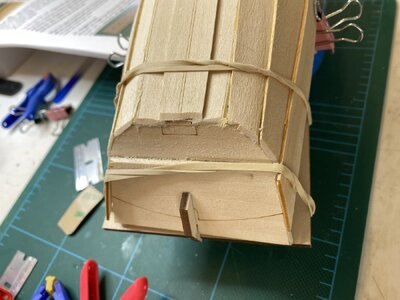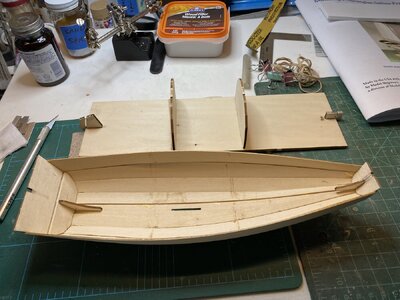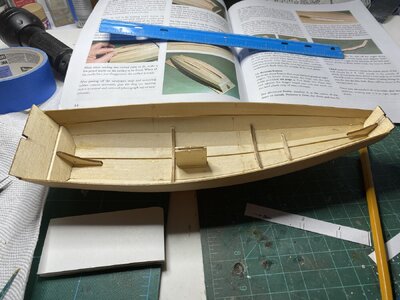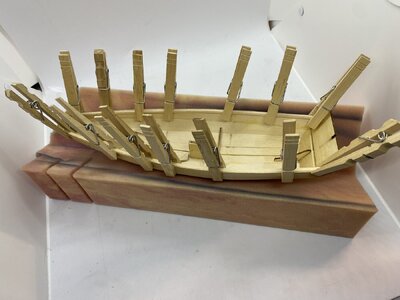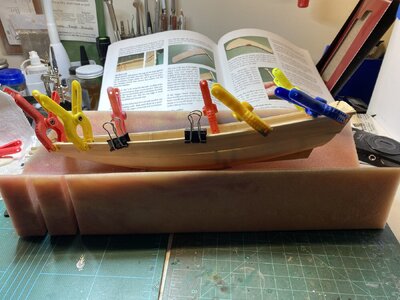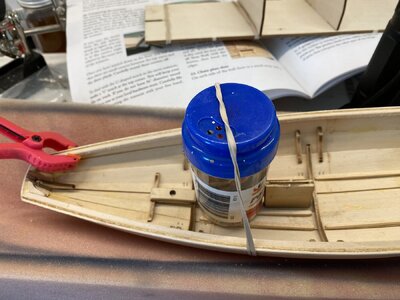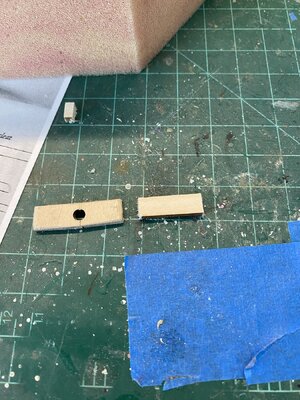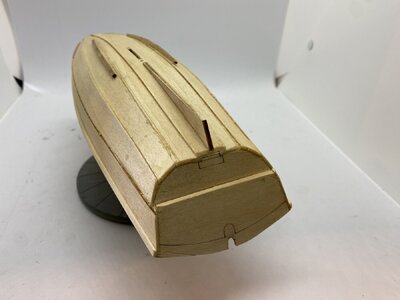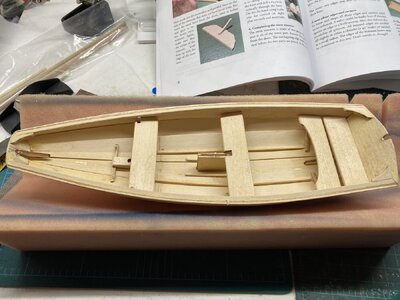This is my first building log. This is the second wooden ship I have built. I have done plastic models for many years. I found the Ship of Scales site and decided to dip my toe in after reading for a few months. My first build was the Grand Banks Dory, which I found to be a lot of fun. My sailing pram arrived in a well packed box with no missing parts. The instruction manual is very detailed, as it was for the Dory.
I first started with the transom pieces for the bow and stern, which were easy to assemble after reading the description in the building manual. While the stern transom, which is two pieces was drying I made the building board.
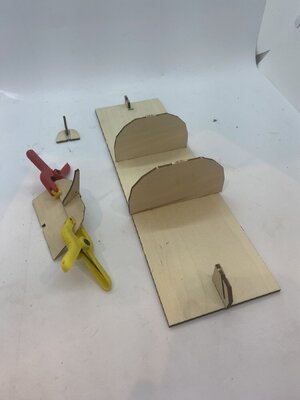
I first started with the transom pieces for the bow and stern, which were easy to assemble after reading the description in the building manual. While the stern transom, which is two pieces was drying I made the building board.

Last edited:



